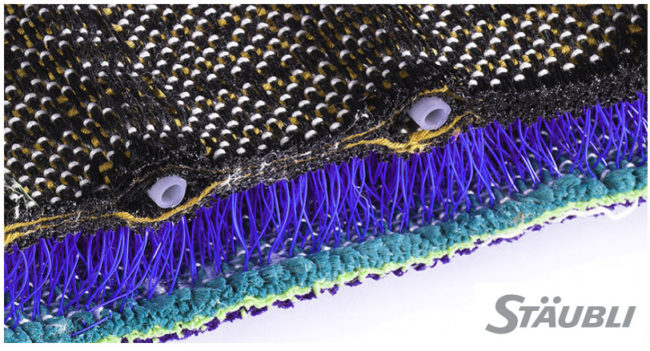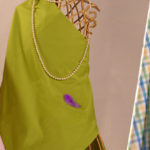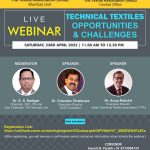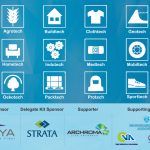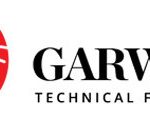
Frequently Asked Questions (FAQs) on Technical Textiles
Technical textiles are defined as textile materials and products used primarily for their technical performance and functional properties rather than their aesthetic or decorative characteristics. Other terms used for defining technical textiles include industrial textiles, functional textiles, performance textiles, engineering textiles, invisible textiles and hi-tech textiles.
Technical textiles are used individually or as a component/part of another product. Technical textiles are used individually to satisfy specific functions such as fire retardant fabric for uniforms of firemen and coated fabric to be used as awnings. As a component or part of another product, they are used to enhance the strength, performance or other functional properties of that product as done by the tyre cord fabrics in tyres and interlining in shirt collars. They are also used as accessories in processes to manufacture other products like filter fabric in food industry or paper maker felt in paper mills.
Some examples of day-to-day use of technical textile products: Sr. No. Applications Products
| 1. |
Kitchen |
Wipes, Floor Mops, Tea Bags, Coffee Filters |
| 2. |
Clothe |
Collar/Cuff Interlinings, Shoulder Pads, Waddings in Jackets |
| 3. |
Shoe |
Lining, Insoles, Toe Stiffners, Synthetic Uppers |
| 4. |
Car |
Carpets, Roof-liners, Insulations, Air Filters |
| 5. |
Civil Engineering |
Geotextiles in Roads, Railway Tracks, Soil Erosion, Slope Stabilisation |
| 6. |
Furnishing |
Carpets, Vertical Blinds, Wall Coverings |
| 7. |
Factory |
Dust Collection Filter Bags, Liquid Filtration, Clean Air Filters of AC systems |
| 8. |
Hospital |
Masks, Gowns, Caps, Dressing, Bandage |
| 9. |
Hygiene |
Baby Diaper, Sanitary Napkin, Wet Tissues |
| 10. |
Bed |
Blanket, Quilts, Mattresses |
Depending on the product characteristics, functional requirements and end-use applications the highly diversified range of technical textile products have been classified into 12 segments.
i. Agrotech (Agriculture, horticulture and forestry) ii. Buildtech (building and construction) iii. Clothtech (technical components of shoes and clothing) iv. Geotech (geotextiles, civil engineering) v. Hometech (components of furniture, household textiles and floor coverings) vi. Indutech (filtration, cleaning and other industrial usage) vii. Meditech (hygiene and medical) viii. Mobiltech (automobiles, shipping, railways and aerospace) ix. Oekotech (environmental protection) x. Packtech (packaging) xi. Protech (personal and property protection) xii. Sporttech (sport and leisure).
The Global market size of technical textiles for the year 2007 is US$ 114630 mn and it is expected to increase to US $ 127288 mn by 2010. (Source: DRA).
The domestic market size of technical textiles for the year 2007-08 is Rs.41,756 crores and is expected to increase to Rs. 70,151 crores by 2012-13 (Source: IMaCS).
Yes, (i) “Report of the Expert Committee on Technical Textiles” (vol-I & II) is available. Vol I contains various detailed information on Overview of the technical textile industry with particular reference to global scenario, status of the domestic technical textile industry, major technical textile items, raw materials of technical textiles, non-woven sector of technical textiles, policy suggestions for promotion of technical textiles etc. while Volume II provides various Project profiles made on Technical textile products. (ii) The final report on “Baseline survey of technical textile industry in India” provides latest details on technical textiles viz, domestic scenario and segment-wise consumption in India, non-woven sector of technical textiles, competitive assessment of India vis-à-vis other countries, raw materials for technical textiles, products selected for focused attention, technical textiles machinery, etc.
(a) Scheme for Growth and Development of Technical Textiles (SGDTT) To tap the potential of technical textiles and to unleash the investments in this industry, the govt. has launched Scheme for Development and Growth of Technical Textiles (SDGTT) comprising of 3 components, i) Setting up of Centres of Excellence (COEs), ii) creation of awareness and iii) baseline survey of technical textile industry.
(i) Setting up of Centres of excellence (COEs) : Govt. has identified four areas for COEs. The facilities proposed to be created in COEs are as follows:
- Testing facilities with international and national accreditation.
- Resource center with IT infrastructure.
- Training facilities for trainers and personnel for technical textile industry.
- Development of standards.
(ii) Creation of awareness : The Office of the textile Commissioner in association with industry and Textile Research Associations (TRAs) is organizing need based seminars / workshops in different parts of the country to highlight the potential of technical textiles to encourage investments in this area. (iii) Base line survey of technical textiles : To strengthen the database of the technical textile industry, the govt. has awarded a baseline survey to ICRA Management Consultancy Services Ltd. (IMaCS). The report contains details on all the producers, consumers, importers and exporters of all categories of Technical Textiles. The final approved report has been placed in the website www.technotex.gov.in. (b) Technology Upgradation Fund Scheme (TUFS) Technical textile manufacturing machineries have been covered under TUFS eligible for 5% interest reimbursement. Under the modified TUFS, the specified machinery for technical textile has also been made eligible for 10% capital subsidy in addition to 5% interest reimbursement. The detail of the list of eligible machines are given at Annex-D-2 of GR on erstwhile & Modified TUFS and Annex –K of GR on Modified TUFS. (c) Concessional Customs Duty Major machineries for manufacturing of technical textiles have been placed under the concessional basic customs duty list of 5%.
In order to provide infrastructure support at one place for thrust areas of the technical textiles, govt. is in the process of setting up of four centres of excellence. The four centres of excellence are:
|
Sr.
No.
|
Name of COEs
|
Area of Centre of
Excellence
|
|
1.
|
The Bombay Textile Research Association (BTRA) &
Ahmedabad Textile Industry’s Research Association
(ATIRA) with BTRA as lead partner.
|
Geotech
|
|
2.
|
Synthetic & Art Silk Mills Research Association
(SASMIRA) & Man-made Textile Research Association (MANTRA) & Navsari Agriculture University with Indian Institute of Technology (IIT), Delhi as knowledge partner with SASMIRA as lead partner.
|
Agrotech
|
|
3.
|
Northern India Textile Research Association (NITRA) &
Indian Institute of Technology (IIT), Delhi with NITRA as lead partner.
|
Protech
|
|
4.
|
South India Textile Research Association (SITRA) and AC
College of Technology with SITRA as lead partner.
|
Meditech
|
Above four Centres of Excellence will be established as one-stop shop for the needs of their respective market segments.
COEs are in the process of purchasing Equipments/instruments, Books/Journals and Standards . Technical Textiles industries/entrepreneurs can approach the COEs for testing of their products, training, Prototype sample development, preparation of project profile and consultancy. All the COEs will be establishing Video conferencing facility which is under construction. The industry / institutes can get benefit from that.
Yes. IIT, Delhi, IIT, Bombay and other leading technical institutes are doing some R&D work/Product Development on technical textiles. The industry people can approach them for any technical assistance/queries/information.
Yes. To avail 10% Capital Subsidy in addition to 5% Interest reimbursement for Technical Textile units, it is mandatory for registering the unit with this office.
The Technical Textile units intending to obtain Registration from this office has to send filled in TR-I format (format is given in the modified GR on TUFS) to this office which will be examined and eligible units will be provided Registration Number. The scanned copy of Registration letter will also be placed in our website.
Yes. The Govt. has constituted Steering Committee for Growth and Development of Technical Textiles (SCGDTT) under the Chairmanship of the Textile Commissioner comprising of representatives of the producers of the technical textiles and TRAs to review / monitor and take necessary action for promoting the technical textiles.
